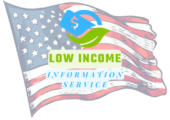Insurance for Low Income
Understanding Insurance For Low Income Individuals
Many low-income individuals and families face significant challenges when it comes to accessing affordable insurance coverage. Understanding the ins and outs of insurance options can be overwhelming, especially for those already struggling to make ends meet. However, insurance is crucial for low-income households as it provides a safety net during unforeseen circumstances. In this blog post, we will explore various affordable insurance options available for low-income individuals, discuss the benefits of obtaining insurance coverage, and provide insights on how to qualify for subsidized insurance programs. Let’s dive in and find out how insurance can offer financial stability and peace of mind to those in need.
Understanding Insurance For Low Income Individuals
Understanding Insurance For Low Income Individuals
Insurance is a crucial aspect of financial planning and security, providing individuals with a safety net in case of unexpected events. However, for low-income individuals, affording insurance can be challenging. With limited financial resources, finding suitable coverage at affordable rates becomes a significant concern. In this blog post, we will delve into the intricacies of insurance for low-income individuals, exploring various options for affordable insurance coverage, discussing the benefits it offers, and providing insight on how to qualify for subsidized insurance programs.
Options For Affordable Insurance Coverage
For low-income individuals, finding insurance coverage that fits within their budget can be overwhelming. However, there are several options available to help make insurance more affordable. One such option is Medicaid, a joint federal and state program that offers health insurance to people with low income. Eligibility for Medicaid differs from state to state but is generally based on income and family size. Another option to consider is the Children’s Health Insurance Program (CHIP), which provides low-cost or no-cost health coverage for children in low-income families. Additionally, individuals can explore insurance marketplaces and exchange programs established under the Affordable Care Act, which offer a range of health insurance plans with varying costs and coverage options.
Benefits Of Insurance For Low Income Households
Insurance plays a vital role in safeguarding the financial well-being of low-income households. It provides access to necessary healthcare services and can help mitigate the financial burden that unforeseen medical expenses can create. With insurance coverage, low-income individuals have improved access to preventive care, regular check-ups, and necessary treatments. Furthermore, insurance can protect assets and provide compensation in case of property damage or loss due to natural disasters or accidents. By having insurance, low-income households can have peace of mind, knowing that they are protected from various risks and can secure their financial stability.
How To Qualify For Subsidized Insurance Programs
Qualifying for subsidized insurance programs can help low-income individuals acquire affordable coverage tailored to their needs. The eligibility criteria and application process vary depending on the program. Individuals can start by researching and understanding the requirements of different programs available in their state. Generally, subsidized insurance programs take into account income level, family size, age, and disability status. Completing an application with accurate and up-to-date information is crucial to ensure eligibility. It is important to gather the necessary documents, such as proof of income and identification, to support the application. Seeking assistance from local community resources or insurance agents can also be beneficial in navigating the application process and determining the best insurance options for low-income individuals.
In conclusion, insurance for low-income individuals is a critical aspect of financial planning and protection. While affordability may be a concern, exploring options such as Medicaid, CHIP, and insurance marketplaces can help individuals find coverage that fits within their budget. The benefits of insurance extend beyond healthcare, providing security and stability to low-income households. By understanding the eligibility criteria and application process for subsidized insurance programs, individuals can take steps towards acquiring the insurance coverage they need. Remember, insurance is an investment in your financial well-being and peace of mind.
Options For Affordable Insurance Coverage
Insurance is an essential aspect of financial planning, providing a safety net for individuals and their families in times of uncertainty. However, for low-income individuals, finding affordable insurance coverage can be challenging. Thankfully, there are several options available that cater to the unique needs and limited budgets of low-income households.
One option for affordable insurance coverage is Medicaid, a joint federal and state program that provides health coverage to people with low income, including adults, children, pregnant women, elderly adults, and individuals with disabilities. Medicaid offers a comprehensive set of benefits that vary by state but generally include doctor visits, hospital stays, prescription medications, and preventive care services. Eligibility is determined based on income and other factors such as household size.
Another option is the Children’s Health Insurance Program (CHIP), which is designed to provide low-cost health coverage to children in families that earn too much money to qualify for Medicaid but cannot afford private insurance. CHIP covers a wide range of services including doctor visits, vaccinations, prescription medications, dental and vision care, and mental health services. Eligibility for CHIP is based on factors such as income, family size, and age of the child.
| Option | Description |
|---|---|
| Medicaid | Joint federal and state program providing health coverage to low-income individuals. |
| CHIP | Low-cost health coverage for children in families that do not qualify for Medicaid. |
For individuals seeking insurance coverage beyond healthcare, subsidized insurance programs such as the Affordable Care Act (ACA) marketplace can offer a range of options. The ACA marketplace provides access to comprehensive health insurance plans covering essential health benefits and preventive services. The coverage available through the marketplace is often subsidized, making it more affordable for low-income individuals and families. To qualify, individuals must meet income requirements and cannot be eligible for employer-sponsored insurance or certain other government programs.
In addition to government-sponsored programs, low-income individuals can explore insurance options offered by community organizations and non-profit agencies. These organizations may provide specialized insurance coverage or offer assistance in finding affordable insurance plans. It is worth researching and reaching out to local resources to explore all available options for affordable insurance coverage.
Benefits Of Insurance For Low Income Households
Insurance is an essential aspect of financial planning for individuals and households at all income levels. However, it is particularly crucial for low-income households to have adequate insurance coverage. Having insurance provides several benefits and can protect low-income households from financial distress in times of unexpected events. In this blog post, we will discuss some of the key benefits of insurance for low-income households.
1. Financial Protection and Security:
Insurance provides low-income households with financial protection and security in the face of unforeseen events such as accidents, illnesses, or natural disasters. It offers a safety net that helps cover the costs associated with these incidents, relieving individuals and families from bearing the full financial burden.
2. Access to Quality Healthcare:
Health insurance is a crucial element for low-income households, as it grants them access to quality healthcare services. With insurance coverage, individuals and families can afford necessary medical treatments, visits to healthcare professionals, and preventive care. This ensures that they receive adequate healthcare and can maintain their overall well-being.
3. Peace of Mind:
Insurance can provide peace of mind for low-income households, reassuring them that they have a safety net in place. Knowing that they are protected against unforeseen circumstances can alleviate stress and anxiety, allowing them to focus on other aspects of their lives, such as education, employment, and personal growth.
4. Property Protection:
Property insurance is another important aspect for low-income households. It safeguards their assets, such as homes or belongings, against damages or losses caused by events like fires, theft, or natural disasters. This coverage ensures that even in challenging times, individuals and families can recover financially and rebuild their lives.
5. Improved Financial Stability:
Having insurance can contribute to the overall financial stability of low-income households. It prevents them from facing significant debt or bankruptcy due to unforeseen expenses. Insurance coverage allows individuals to allocate their limited resources more efficiently, ensuring that they can meet their daily needs and goals for the future.
Conclusion:
Insurance is a valuable tool that provides numerous benefits for low-income households. It offers financial protection, access to quality healthcare, peace of mind, property protection, and improved financial stability. It is essential for individuals and families to explore the available options for affordable insurance coverage and understand how to qualify for subsidized insurance programs. By securing adequate insurance, low-income households can mitigate the financial risks associated with unexpected events and build a more secure and resilient future.
How To Qualify For Subsidized Insurance Programs
In today’s world, having access to affordable health insurance is crucial for individuals and families, especially those with low incomes. Fortunately, there are subsidized insurance programs available to help alleviate the financial burden and provide the necessary coverage for those who qualify. In this blog post, we will explore various ways to qualify for subsidized insurance programs and the benefits they offer.
One way to qualify for subsidized insurance programs is through Medicaid. Medicaid is a joint federal and state program that provides health coverage for individuals and families with limited income. Eligibility requirements vary from state to state, but generally, individuals with an income below a certain threshold and certain demographics, such as pregnant women, children, and disabled individuals, may qualify for Medicaid.
Another avenue to explore is the Children’s Health Insurance Program (CHIP). CHIP is designed to provide health coverage for children in low-income families who do not qualify for Medicaid. Eligibility criteria for CHIP also varies by state, but income thresholds are generally higher than those for Medicaid. This program ensures that children from low-income households have access to necessary healthcare services.
- Medicaid: Joint federal and state program for low-income individuals and families.
- Children’s Health Insurance Program (CHIP): Provides coverage for children in low-income families.
Furthermore, the Affordable Care Act (ACA) offers premium tax credits and cost-sharing reductions to make health insurance more affordable for individuals and families with low income. These subsidies are available to those who purchase insurance through the Health Insurance Marketplace and have income between 100% and 400% of the federal poverty level. The subsidies help reduce monthly premiums and out-of-pocket costs, making health insurance more accessible for low-income households.
It is essential to note that eligibility for subsidized insurance programs can change over time due to various factors such as income levels, household size, and current policies. Therefore, it is crucial to stay informed and regularly check for updates on eligibility and enrollment periods to ensure you qualify for subsidized insurance programs.
| Subsidized Insurance Programs | Eligibility Criteria | Benefits |
|---|---|---|
| Medicaid | Income below a certain threshold, specific demographics | Health coverage for low-income individuals and families |
| CHIP | Income below a certain threshold, children in low-income families | Health coverage for children in low-income families |
| Affordable Care Act | Income between 100% and 400% of the federal poverty level | Premium tax credits and cost-sharing reductions |
In conclusion, qualifying for subsidized insurance programs can provide vital support for low-income individuals and families to obtain affordable health coverage. By exploring options such as Medicaid, CHIP, and subsidies offered through the ACA, individuals can access the healthcare services they need without facing financial hardship. It is crucial to stay informed about eligibility criteria and updates to ensure continued access to subsidized insurance programs.
Frequently Asked Questions
1. Can low income individuals get insurance coverage?
Yes, low income individuals can get insurance coverage. There are several options available to make insurance more affordable for people with low income.
2. What are the options for affordable insurance coverage for low income individuals?
Low income individuals have several options for affordable insurance coverage, including Medicaid, Children’s Health Insurance Program (CHIP), and subsidized health insurance plans through the Health Insurance Marketplace.
3. What are the benefits of insurance for low income households?
Insurance provides many benefits for low income households, including access to preventive care services, affordable medications, and financial protection against unexpected medical expenses.
4. How can individuals qualify for subsidized insurance programs?
To qualify for subsidized insurance programs, individuals need to meet certain income requirements. Income limits vary depending on the program and family size. Additionally, individuals may need to provide documentation to verify their income eligibility.
5. What is Medicaid and how does it help low income individuals?
Medicaid is a government health insurance program that provides free or low-cost health coverage to low income individuals and families. It helps cover essential health services, including doctor visits, hospital stays, and prescription medications.
6. What is the Children’s Health Insurance Program (CHIP) and who is eligible?
The Children’s Health Insurance Program (CHIP) provides low-cost or free health insurance for children in low income families. Eligibility for CHIP varies by state, but generally, children from families with incomes that are too high for Medicaid but too low to afford private insurance can qualify.
7. How can individuals apply for subsidized insurance programs?
Individuals can apply for subsidized insurance programs, such as Medicaid and CHIP, through their state’s health insurance marketplace or by contacting their local social services agency. They may need to fill out an application form and provide necessary documentation to determine eligibility.



